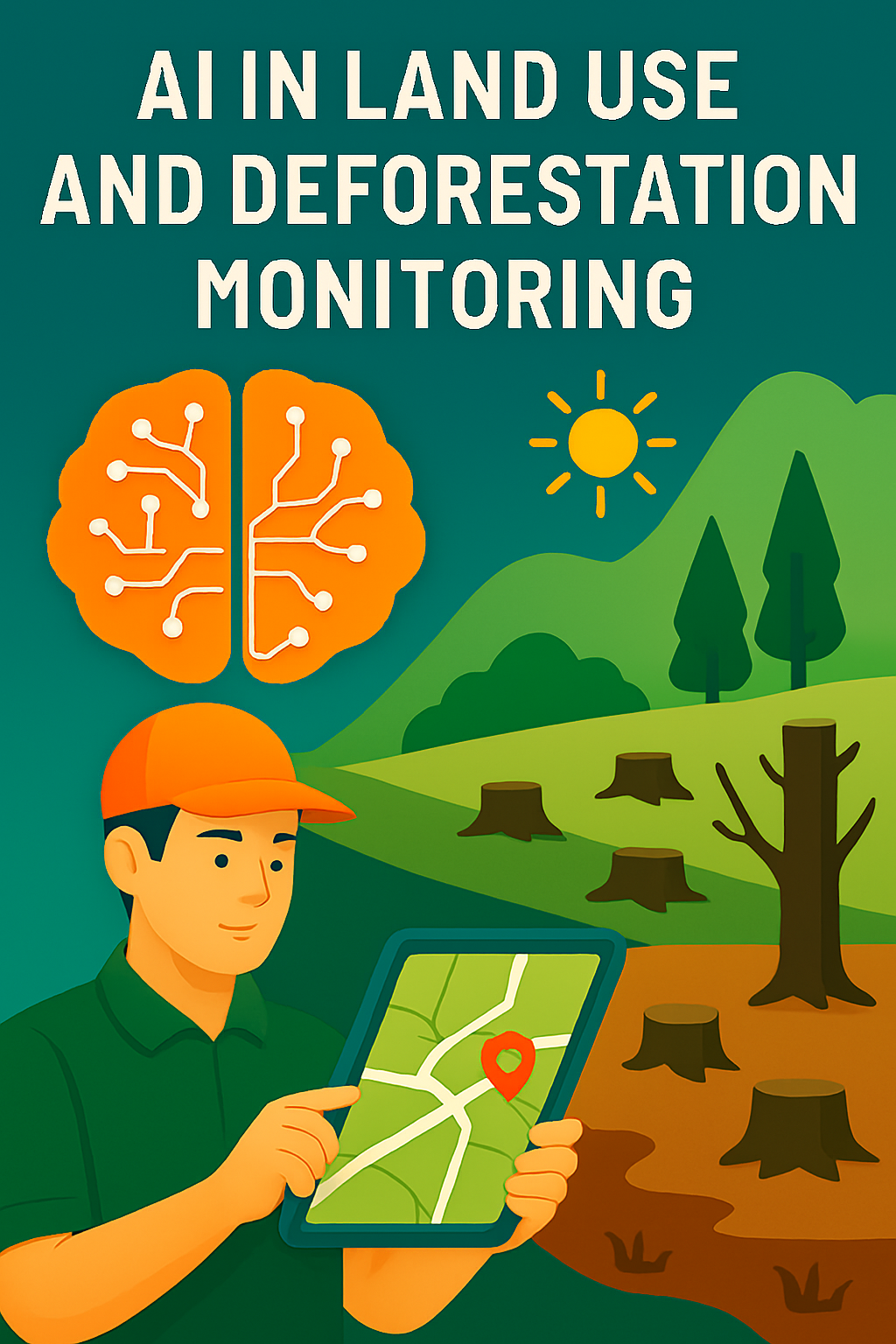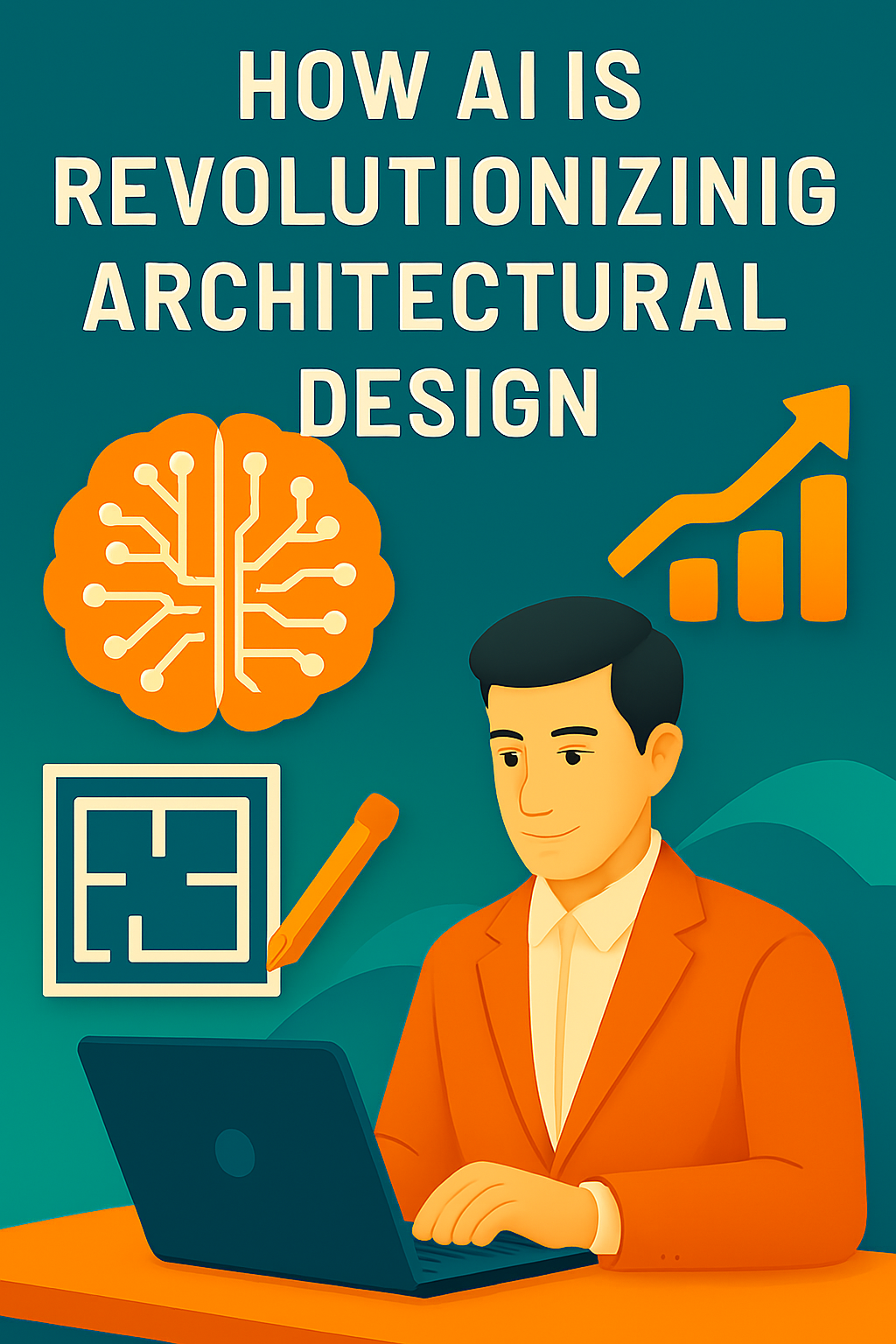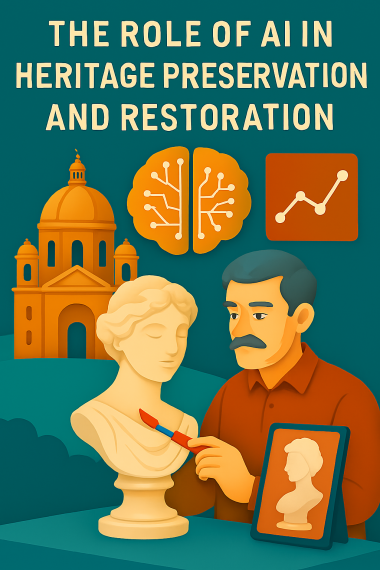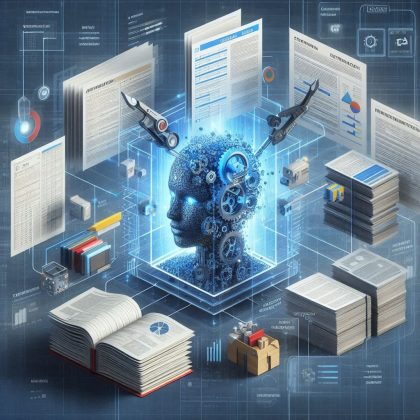
The Role of AI in Contract and Claims Management
The Role of AI in Contract and Claims Management
Managing contracts and resolving claims are critical yet complex tasks in industries like construction, engineering, and energy. The traditional methods of handling these processes often involve manual reviews, lengthy negotiations, and potential disputes. Artificial Intelligence (AI) is revolutionizing contract and claims management by improving efficiency, accuracy, and decision-making.
1. Automating Contract Review and Drafting
AI-powered tools automate the drafting and review of contracts, significantly reducing the time and effort involved. By analyzing contract templates and legal documents, AI can:
- Identify standard clauses and suggest appropriate modifications.
- Highlight missing terms or potential risks.
- Ensure compliance with regulations and company policies.
Natural Language Processing (NLP) enables AI to understand legal language and provide actionable insights, reducing errors and improving contract quality.
2. Enhancing Risk Identification
AI systems analyze historical contracts and claims data to identify potential risks in new agreements. These tools flag clauses that may lead to disputes or financial exposure, enabling proactive risk mitigation.
For instance, AI can detect vague or contradictory language that could cause confusion, ensuring contracts are clear and enforceable.
3. Streamlining Claims Management
AI improves the efficiency of claims management by automating tasks like:
- Document analysis and classification.
- Identifying the root causes of claims.
- Calculating damages and suggesting fair settlements.
By processing large volumes of data, AI ensures faster resolution of claims, reducing delays and minimizing conflicts.
4. Predictive Analytics for Claims Avoidance
AI uses predictive analytics to foresee potential claims based on project performance, contract compliance, and historical patterns. This enables organizations to address issues early, avoiding costly disputes and legal battles.
5. Improving Collaboration and Negotiation
AI-powered platforms facilitate collaboration by providing a centralized space for all stakeholders to review contracts, track changes, and resolve disputes. AI can also simulate negotiation scenarios, suggesting strategies that achieve favorable outcomes.
6. Ensuring Compliance and Accountability
AI ensures that contracts and claims comply with industry standards and regulations. Automated audit trails track all changes and actions, ensuring accountability and transparency throughout the process.
Conclusion
AI is transforming contract and claims management by streamlining processes, reducing risks, and improving accuracy. As these technologies advance, they will continue to enhance efficiency, reduce costs, and foster trust in complex contractual environments.

Enhancing Energy Trading with Machine Learning Algorithms
Enhancing Energy Trading with Machine Learning Algorithms
The energy market is a dynamic and complex ecosystem where supply and demand fluctuate constantly. Accurate predictions and efficient trading strategies are critical for maximizing profitability and ensuring a stable energy grid. Machine learning (ML) is revolutionizing energy trading by providing powerful tools for data analysis, forecasting, and decision-making.
1. Understanding Energy Trading Challenges
Energy trading involves buying and selling electricity, natural gas, or renewable energy certificates in wholesale markets. Key challenges include:
- Price Volatility: Energy prices can fluctuate due to factors like weather conditions, demand surges, and geopolitical events.
- Demand-Supply Imbalances: Predicting energy consumption patterns is complex, especially in renewable energy markets.
- Regulatory Constraints: Adhering to market regulations while optimizing profitability is a delicate balance.
Machine learning algorithms address these challenges by leveraging vast datasets to uncover patterns and make accurate predictions.
2. Accurate Price Forecasting
Machine learning models analyze historical price data, weather forecasts, and market trends to predict energy prices. Techniques such as time-series analysis and neural networks enable traders to:
- Anticipate price fluctuations.
- Optimize the timing of trades.
- Hedge against risks effectively.
For example, ML algorithms can predict hourly electricity prices, helping traders capitalize on price spikes or drops.
3. Enhancing Demand-Supply Predictions
Accurate demand-supply forecasting is crucial for energy grid stability. Machine learning models process data from smart meters, IoT devices, and weather sensors to predict consumption patterns. This allows:
- Energy suppliers to meet demand without overproducing.
- Traders to align buying and selling strategies with market conditions.
4. Optimizing Trading Strategies
Machine learning supports the development of algorithmic trading systems, enabling automated and optimized trade execution. Reinforcement learning models, in particular, excel at:
- Testing and refining trading strategies.
- Learning from market feedback to improve performance.
- Minimizing losses during volatile market conditions.
5. Risk Management and Fraud Detection
Machine learning enhances risk management by analyzing market behavior and identifying anomalies. These systems can:
- Detect fraudulent activities in energy trading markets.
- Assess the financial risks of specific trading strategies.
- Provide early warnings for potential losses.
6. Promoting Renewable Energy Trading
As renewable energy sources like solar and wind become more prevalent, machine learning plays a key role in managing their intermittent nature. By forecasting renewable energy production, ML algorithms enable efficient trading of renewable energy credits and certificates, fostering sustainability.
Conclusion
Machine learning algorithms are transforming energy trading by improving price forecasting, demand-supply predictions, and trading strategies. As the energy market evolves, ML-powered tools will become indispensable for navigating its complexities, driving profitability, and promoting a more sustainable energy future.

AI in Land Use and Deforestation Monitoring
Here’s the article “AI in Land Use and Deforestation Monitoring” for your blog.
AI in Land Use and Deforestation Monitoring
The growing concern over deforestation and unsustainable land use has heightened the need for innovative monitoring solutions. Artificial Intelligence (AI) is transforming land use and deforestation monitoring by providing real-time insights, predictive capabilities, and actionable data to combat environmental degradation effectively.
1. Real-Time Monitoring with AI
AI-powered systems analyze satellite imagery and aerial data to detect changes in land use in real time. By using machine learning algorithms, these systems can:
- Identify deforested areas.
- Detect illegal logging activities.
- Monitor agricultural expansion and urbanization.
For example, AI tools can process high-resolution satellite images to identify tree cover loss and send alerts to authorities for immediate action.
2. Analyzing Historical Trends
AI enables the analysis of historical land use data, uncovering trends and patterns that inform future strategies. By processing decades of satellite imagery, machine learning models can:
- Predict areas at risk of deforestation.
- Evaluate the effectiveness of conservation policies.
- Guide reforestation and land restoration efforts.
3. Predictive Modeling for Risk Assessment
AI systems use predictive analytics to assess the likelihood of deforestation in specific regions. These models consider factors such as:
- Proximity to logging roads or urban areas.
- Economic activities driving land use change.
- Climate conditions and natural events.
This proactive approach allows governments and organizations to target high-risk zones with preventive measures.
4. Supporting Policy and Decision-Making
AI provides policymakers with actionable data to make informed decisions. By presenting visualizations and detailed reports, AI tools help stakeholders:
- Design effective conservation strategies.
- Allocate resources efficiently for monitoring and enforcement.
- Evaluate the socio-economic impacts of land use policies.
5. Enhancing Public Engagement
AI-powered platforms facilitate public engagement by offering user-friendly tools for communities and activists. Interactive maps and dashboards allow users to:
- Track deforestation in their regions.
- Report illegal activities.
- Participate in conservation initiatives.
6. Promoting Sustainable Development
AI ensures that land use decisions align with sustainable development goals (SDGs). By balancing environmental protection with economic growth, AI helps create solutions that benefit both people and the planet.
Conclusion
AI is revolutionizing land use and deforestation monitoring by providing advanced tools to track changes, predict risks, and support conservation efforts. As these technologies evolve, they will play a pivotal role in safeguarding ecosystems, mitigating climate change, and promoting sustainable land management.

AI-Powered Structural Design Optimization
The field of structural engineering is being revolutionized by artificial intelligence (AI), bringing
unparalleled efficiency, precision, and creativity to design processes. Structural design
optimization—a critical aspect of ensuring safety, functionality, and cost-efficiency—has
traditionally relied on iterative manual calculations and simulations. With AI, engineers can now
explore innovative solutions, streamline workflows, and achieve optimal designs faster than ever.
This article delves into how AI-powered structural design optimization works, its benefits, real-
world applications, and the challenges it presents.
How AI is Transforming Structural Design Optimization
- Generative Design: AI algorithms, such as generative design tools, analyze design
objectives and constraints to propose multiple optimized solutions. Engineers can explore
various configurations to find the best balance between material usage, strength, and cost.
- Finite Element Analysis (FEA) Automation: AI enhances FEA by automating the
identification of critical stress points and optimizing structural components for better
performance. This significantly reduces analysis time.
- Material Optimization: Machine learning models predict the behavior of different
materials under various conditions, enabling the selection of the most suitable materials
for a project.
- Topology Optimization: AI-driven topology optimization refines structural designs by
removing unnecessary material while maintaining strength and functionality, leading to
lightweight yet robust structures.
- Design Code Compliance: AI systems check designs against relevant building codes and
standards, ensuring compliance and reducing the risk of errors.
Benefits of AI-Powered Structural Design Optimization
- Enhanced Efficiency: Automating design iterations and analyses saves time, allowing
engineers to focus on creative problem-solving and innovation.
- Cost Savings: Optimized designs reduce material usage, construction costs, and
maintenance expenses, delivering significant savings over a project’s lifecycle.
- Improved Safety: AI ensures that designs meet rigorous safety standards by identifying
potential failure points and suggesting improvements.
- Sustainability: By minimizing material waste and promoting the use of sustainable
resources, AI contributes to eco-friendly construction practices.
- Scalability: AI tools can handle projects of varying complexities, from small residential
buildings to massive infrastructure projects.
Challenges in Implementing AI in Structural Design
- Data Dependency: AI models require high-quality data to function effectively.
Inconsistent or incomplete datasets can lead to inaccurate predictions.
- Skill Gaps: Engineers need training to use AI tools and interpret their outputs, which
may require time and investment.
- Integration with Legacy Systems: Many firms still rely on traditional design methods,
making it challenging to integrate AI with existing workflows.
- Ethical Concerns: Decisions made by AI algorithms must be transparent and aligned
with engineering ethics to ensure accountability.
Real-World Applications of AI in Structural Design Optimization
- Skyscraper Design: AI was used in the design of the Morpheus Hotel in Macau,
optimizing its unique free-form structure for both aesthetics and strength.
- Bridge Engineering: AI tools have been employed to optimize bridge designs, such as
the Queensferry Crossing in Scotland, reducing material usage while ensuring durability.
- Disaster-Resilient Buildings: AI-driven simulations help design structures that can
withstand earthquakes, hurricanes, and other natural disasters by predicting their impacts
on different structural configurations.
The Future of AI in Structural Design
As AI technology advances, its role in structural design will expand further:
Real-Time Design Adjustments: AI tools integrated with IoT sensors will allow
structures to adapt in real-time to environmental changes, such as wind or seismic
activity.
Collaborative Design Platforms: Cloud-based AI systems will enable engineers,
architects, and contractors to collaborate seamlessly, sharing insights and optimizing
designs collectively.
AI-Powered Construction: Robots and 3D printers guided by AI will construct
optimized structures with unmatched precision.
Sustainability Metrics: Future AI tools will incorporate environmental impact
assessments directly into the design process, promoting more sustainable construction
practices.
Conclusion
AI-powered structural design optimization is revolutionizing the construction industry by making
structures smarter, safer, and more efficient. By automating tedious processes, enhancing safety,
and promoting sustainability, AI empowers engineers to tackle complex challenges and deliver
innovative solutions. However, to fully realize its potential, the industry must address challenges
such as data quality, skill gaps, and integration issues.
As AI continues to evolve, its transformative impact on structural engineering will only grow,
shaping the built environment of the future with intelligence and precision.

How AI is Revolutionizing Architectural Design
Artificial intelligence (AI) is no longer just a tool for tech-driven industries; it is transforming the
creative realms of architecture by introducing new levels of efficiency, precision, and innovation.
From concept generation to construction planning, AI is reshaping how architects approach
design, pushing the boundaries of what is possible.
This article explores the multifaceted ways AI is revolutionizing architectural design, the
benefits it offers, and the challenges that come with integrating this technology into a
traditionally human-centric field.
Applications of AI in Architectural Design
- Generative Design: AI-driven tools like Autodesk’s Generative Design software allow
architects to input design goals and constraints (e.g., space utilization, sustainability
requirements) and generate multiple design options. This approach fosters creativity and
helps identify optimal solutions.
- Building Information Modeling (BIM) Enhancements: AI integrated with BIM
systems provides real-time updates, error detection, and predictive analysis, making
project management and collaboration seamless.
- Sustainability Analysis: AI-powered platforms analyze environmental data to
recommend sustainable design elements, such as optimal building orientation, material
choices, and energy-efficient systems.
- Automated Drafting and Detailing: Tools like BricsCAD and Rhino AI automate
repetitive tasks such as drafting and detailing, freeing up architects to focus on creative
aspects of design.
- Virtual Reality (VR) and AI: Combining AI with VR enables immersive design
experiences, allowing architects and clients to visualize projects in real-time and make
informed decisions.
- Historic Preservation: AI tools can analyze and reconstruct historical architecture by
interpreting old photographs, blueprints, or degraded materials, preserving cultural
heritage.
Benefits of AI in Architectural Design
- Enhanced Creativity: AI offers architects the ability to explore unconventional design
ideas by generating multiple options based on input constraints.
- Improved Efficiency: Automating repetitive tasks reduces project timelines and allows
architects to focus on complex problem-solving.
- Data-Driven Insights: AI analyzes vast datasets to provide actionable insights, enabling
architects to make informed decisions.
- Cost Savings: By optimizing designs and reducing rework, AI helps lower overall
project costs.
- Sustainability and Resilience: AI facilitates eco-friendly designs and ensures buildings
are resilient to future environmental changes.
Challenges of Integrating AI in Architecture
- High Initial Costs: Implementing AI tools can be expensive, especially for small or
medium-sized firms.
- Skill Gaps: Many architects require training to effectively use AI technologies.
- Ethical Concerns: The use of AI raises questions about data ownership, privacy, and the
potential loss of human creativity.
- Dependence on Data Quality: AI outcomes are only as good as the data fed into them,
making accurate and comprehensive data crucial.
Case Studies: AI in Action
- Zaha Hadid Architects: This firm uses AI to optimize structural systems and material
use, creating designs that are both visually stunning and efficient.
- Sidewalk Labs (Toronto): AI was instrumental in designing a smart city project,
incorporating sustainable and innovative design elements tailored to the community’s
needs.
- AI-Driven Facade Design: Several firms are using AI algorithms to create parametric
facades that adapt to environmental conditions like sunlight and wind.
The Future of Architectural Design with AI
Looking ahead, AI will continue to shape architectural design by:
Personalized Architecture: AI can create designs tailored to individual client
preferences, using data on lifestyle, climate, and cultural context.
AI and Robotics Collaboration: Robots integrated with AI could construct complex
structures with precision and speed, reducing manual labor.
Smart Cities: AI will play a key role in designing smart cities, focusing on sustainability,
connectivity, and livability.
Autonomous Design Systems: Future AI tools may autonomously generate complete
designs, requiring minimal human input.
Conclusion
AI is revolutionizing architectural design by enhancing creativity, efficiency, and sustainability.
While challenges like cost and ethical considerations remain, the benefits of AI-driven design far
outweigh the hurdles. By embracing AI, architects can push the boundaries of innovation and
redefine the built environment for future generations.
As AI continues to evolve, its potential to reshape architecture will only grow, offering endless
possibilities for those willing to adapt and innovate.

The Role of AI in Heritage Preservation and Restoration
Heritage preservation and restoration are vital for safeguarding the cultural and historical identity
of societies. However, these tasks are often fraught with challenges, including the degradation of
materials, lack of documentation, and the sheer complexity of restoring ancient structures or
artifacts. Enter artificial intelligence (AI): a game-changing technology that is transforming how
we protect and restore our cultural heritage.
This article explores the various ways AI is revolutionizing heritage preservation, the benefits it
offers, and the challenges involved in implementing these advanced technologies.
How AI is Transforming Heritage Preservation and Restoration
- 3D Scanning and Reconstruction: AI-powered tools enable the creation of accurate 3D
models of damaged or incomplete structures. By analyzing historical data, photographs,
and existing architectural elements, AI can reconstruct missing parts digitally before any
physical restoration begins.
- Image Analysis and Enhancement: AI enhances the quality of old or damaged
photographs, blueprints, and documents. Tools like deep learning algorithms remove
noise, improve resolution, and restore faded details, making these resources more useful
for preservation efforts.
- Predictive Maintenance: AI monitors environmental conditions, such as humidity,
temperature, and pollution levels, to predict the potential deterioration of heritage sites
and artifacts. This allows for proactive preservation measures.
- Material Analysis: AI algorithms analyze the composition of materials used in historical
artifacts and structures, aiding in the selection of compatible materials for restoration.
- Automated Documentation: Machine learning models process vast amounts of
historical records to generate comprehensive documentation about heritage sites, filling
in gaps where information is incomplete.
- Virtual Reality (VR) Experiences: AI, in combination with VR, creates immersive
experiences that allow people to explore restored heritage sites virtually, broadening
access and raising awareness.
Benefits of AI in Heritage Preservation
- Accuracy: AI reduces human error by relying on data-driven analysis to guide
restoration and preservation efforts.
- Cost Efficiency: AI optimizes resource allocation, reducing costs associated with manual
surveys and trial-and-error methods in restoration.
- Time Savings: Automated processes significantly shorten the time required to document,
analyze, and restore heritage sites and artifacts.
- Accessibility: Virtual restorations and digital archives make heritage accessible to a
global audience, even if physical access is restricted.
- Sustainability: AI helps identify sustainable materials and methods for restoration,
ensuring minimal environmental impact.
Challenges in Using AI for Heritage Preservation
- Data Limitations: AI relies on high-quality data for training. In many cases, historical
data is incomplete or inconsistent, limiting the accuracy of AI models.
- High Costs of Technology: The development and implementation of AI solutions can be
expensive, particularly for smaller heritage organizations.
- Ethical Concerns: The use of AI to reconstruct heritage raises questions about
authenticity and the line between restoration and re-creation.
- Skill Gaps: Preservationists may require training to effectively use AI tools and interpret
their outputs.
Case Studies: AI in Action
- Notre-Dame Cathedral (France): Following the 2019 fire, AI and 3D modeling were
used to digitally reconstruct the damaged portions of the cathedral, guiding restoration
efforts.
- Pompeii (Italy): AI tools analyze ancient texts and archeological data to recreate parts of
the city, enhancing understanding of its historical context.
- Buddhas of Bamiyan (Afghanistan): After their destruction, AI and 3D modeling were
employed to virtually restore these iconic statues, offering a glimpse of their former
glory.
The Future of AI in Heritage Preservation
As AI technology evolves, its role in heritage preservation and restoration will expand to
include:
Real-Time Monitoring Systems: IoT sensors integrated with AI algorithms will enable
real-time monitoring of heritage sites, detecting potential risks instantly.
AI-Driven Research: Advanced AI models will analyze massive datasets from
archeological sites to uncover new insights about ancient civilizations.
Collaborative Restoration Platforms: Cloud-based AI systems will facilitate
collaboration among preservationists worldwide, sharing data and techniques seamlessly.
Cultural Storytelling: AI will generate interactive and personalized narratives around
heritage sites, making history more engaging and educational.
Conclusion
AI is playing a pivotal role in the preservation and restoration of cultural heritage, addressing
challenges that once seemed insurmountable. By combining the power of machine learning, 3D
modeling, and predictive analytics, AI not only protects our past but also enriches our
understanding of it. However, to fully realize its potential, we must address challenges like data
limitations and ethical concerns.
As we look to the future, AI’s ability to bridge the gap between technology and tradition offers
hope for preserving our shared history for generations to come.

AI-Driven Risk Management in Complex Projects
In today’s fast-paced and interconnected world, managing risks in complex projects is a daunting challenge. From supply chain disruptions and regulatory compliance to technical failures, project managers face a myriad of uncertainties that can jeopardize timelines and budgets. This is where artificial intelligence (AI) steps in, offering innovative tools to identify, analyze, and mitigate risks more effectively than ever before.
The Role of AI in Risk Management
AI leverages advanced technologies like machine learning (ML), natural language processing (NLP), and predictive analytics to provide comprehensive risk management solutions. Here are some key areas where AI is making a difference:
- Risk Identification: AI can scan vast amounts of data, including historical project records, real-time updates, and external factors like market trends or weather conditions, to identify potential risks early.
- Risk Assessment: Machine learning models analyze the likelihood and impact of identified risks, prioritizing them based on severity and providing actionable insights.
- Predictive Analytics: By analyzing patterns and trends, AI predicts future risks, such as potential delays or cost overruns, enabling proactive decision-making.
- Scenario Analysis: AI-driven tools simulate various scenarios to assess the potential outcomes of different risk mitigation strategies, helping managers choose the best course of action.
- Automated Monitoring: Continuous monitoring systems powered by AI track key performance indicators (KPIs) and flag anomalies that could indicate emerging risks.
Benefits of AI in Risk Management
- Improved Accuracy: AI reduces human error by processing and analyzing complex datasets with unparalleled precision.
- Enhanced Speed: Risk assessments that once took weeks can now be completed in hours or even minutes with AI-driven tools.
- Cost Efficiency: By identifying risks early and enabling targeted mitigation strategies, AI helps avoid costly project delays and rework.
- Better Resource Allocation: AI prioritizes risks based on their potential impact, ensuring that resources are allocated effectively to address the most critical issues.
- Informed Decision-Making: With predictive analytics and scenario simulations, project managers can make data-driven decisions to minimize risks.
Challenges in Implementing AI for Risk Management
- Data Quality: AI relies on accurate and comprehensive data to function effectively. Incomplete or biased datasets can lead to unreliable results.
- Integration Complexity: Integrating AI tools with existing project management systems can be technically challenging and time-consuming.
- Skill Gaps: Many organizations lack the expertise needed to implement and manage AI-driven risk management systems.
- Ethical Concerns: The use of AI raises questions about data privacy and the potential for algorithmic bias.
Case Studies: Real-World Applications
- Crossrail Project (UK): The Crossrail project used AI-driven predictive analytics to manage risks associated with construction timelines and budget overruns, resulting in significant savings.
- NASA’s Artemis Program: NASA employs AI tools to identify and mitigate technical and operational risks in its ambitious space exploration missions.
The Future of AI-Driven Risk Management
The future of risk management lies in the integration of AI with advanced technologies like blockchain, IoT, and digital twins. These combinations will enable:
- Real-Time Risk Analysis: IoT sensors and AI algorithms working together to monitor project conditions and provide real-time updates.
- Collaborative Risk Platforms: AI-powered platforms that foster collaboration among stakeholders by providing a unified view of risks and mitigation plans.
- Autonomous Risk Mitigation: Self-learning systems capable of autonomously implementing mitigation strategies without human intervention.
Conclusion
AI-driven risk management is revolutionizing how complex projects are planned and executed. By identifying potential risks early, providing actionable insights, and enabling data-driven decisions, AI enhances project resilience and success rates. However, to fully leverage these benefits, organizations must address challenges like data quality and skill gaps.
As AI technology continues to advance, its role in risk management will only grow, helping project managers navigate uncertainties with confidence and precision.

Automating Design Documentation with AI
In the architecture, engineering, and construction (AEC) industries, design documentation forms the backbone of project execution. From construction drawings and specifications to detailed engineering calculations, the production of these documents is both time-intensive and prone to human error. With the advent of artificial intelligence (AI), however, the way we create, manage, and utilize design documentation is undergoing a transformative change.
This article explores how AI is reshaping design documentation, the benefits it brings, and the challenges we need to address to maximize its potential.
The Role of AI in Design Documentation
AI technologies, such as natural language processing (NLP), computer vision, and machine learning (ML), are enabling automation and intelligent insights in design documentation. Here are some key applications:
- Automated Drafting: AI-powered tools like AutoCAD’s machine learning capabilities can generate detailed designs with minimal human intervention. By analyzing project requirements, these tools create precise 2D and 3D models directly.
- Document Generation: Platforms leveraging NLP can produce technical specifications, schedules, and reports based on input data, reducing manual effort.
- Content Extraction and Categorization: AI can extract relevant information from legacy documents, blueprints, or CAD files and organize it into searchable formats, saving time in retrieving critical data.
- Error Detection and Quality Assurance: Machine learning algorithms can review design documentation for inconsistencies, omissions, or errors, ensuring compliance with industry standards and codes.
- Integration with BIM: AI-enhanced Building Information Modeling (BIM) systems allow real-time updates to design documentation, ensuring seamless collaboration across disciplines.
Benefits of Automating Design Documentation
- Time Savings: Automation dramatically reduces the time required to create, review, and update documentation. Designers can focus on creative and analytical tasks instead of repetitive work.
- Improved Accuracy: AI minimizes human error by identifying inconsistencies and ensuring adherence to specifications and codes.
- Enhanced Collaboration: With centralized and real-time updates, project stakeholders can access accurate documentation anytime, enhancing communication and decision-making.
- Cost Efficiency: Streamlining documentation processes reduces overhead costs, from labor to rework caused by errors.
- Sustainability: Digital documentation cuts down on paper use and physical storage, contributing to sustainable practices in the AEC industry.
Challenges in Adopting AI for Design Documentation
While the benefits are compelling, some challenges need attention:
- Data Quality: AI relies on clean, structured data. Legacy systems and unstructured files may require significant preprocessing.
- Skill Gaps: Professionals may need training to effectively use AI tools and interpret their outputs.
- Initial Costs: High upfront costs for AI software and integration can be a barrier for smaller firms.
- Standardization: The lack of industry-wide standards for AI-driven documentation may lead to interoperability issues.
Case Studies: Real-World Applications
- AECOM’s AI-Driven Documentation System: AECOM implemented an AI tool to automate the production of design reports, reducing time spent by 30% while improving accuracy.
- Skanska’s Use of NLP in Specifications: Skanska utilized NLP algorithms to generate and review technical specifications, ensuring consistency across multiple projects.
The Future of Design Documentation with AI
As AI continues to evolve, its applications in design documentation will become even more sophisticated. Potential advancements include:
- Generative AI for Concept Design: AI models like ChatGPT could generate preliminary designs and narratives based on minimal input.
- Predictive Documentation Updates: AI could anticipate changes required in documentation due to regulatory updates or project scope adjustments.
- Voice-Activated Design Tools: Voice assistants integrated with design software could further streamline documentation processes.
Conclusion
AI is revolutionizing the creation and management of design documentation in the AEC industries. By automating routine tasks, enhancing accuracy, and fostering collaboration, AI enables professionals to focus on innovation and problem-solving. However, addressing challenges like data quality and skill gaps is crucial for unlocking its full potential.
As firms continue to embrace AI-driven tools, the future of design documentation looks smarter, faster, and more efficient than ever.







